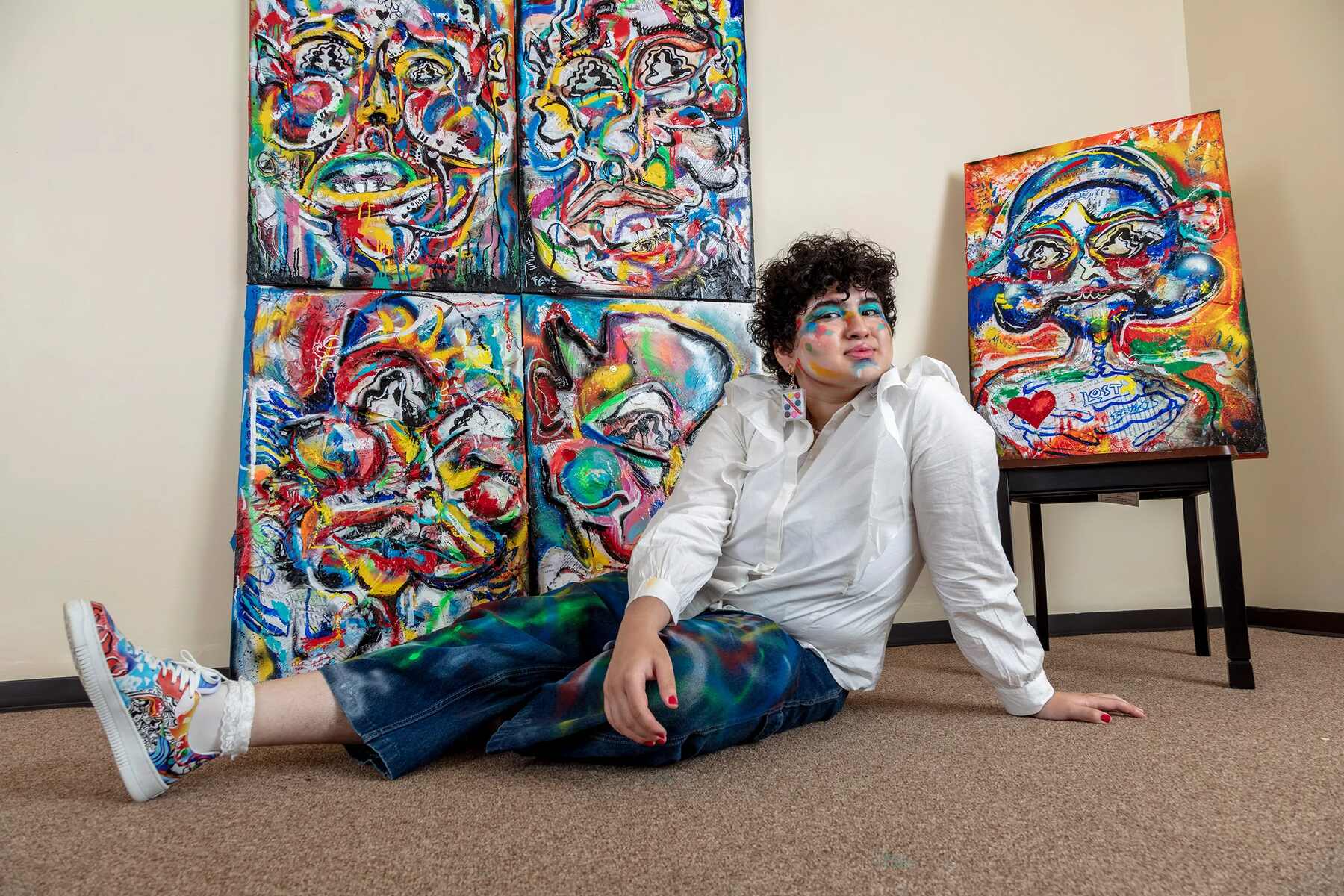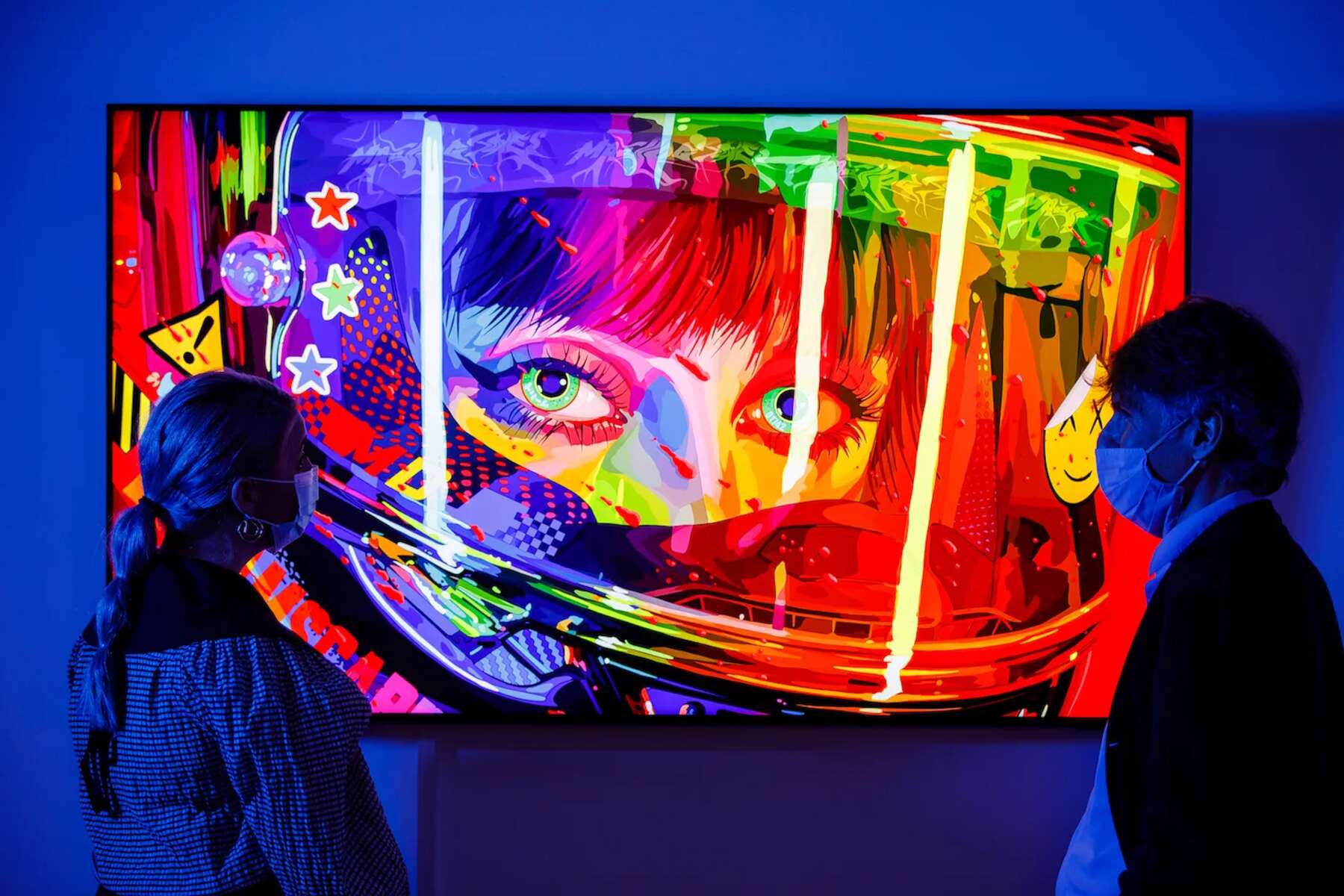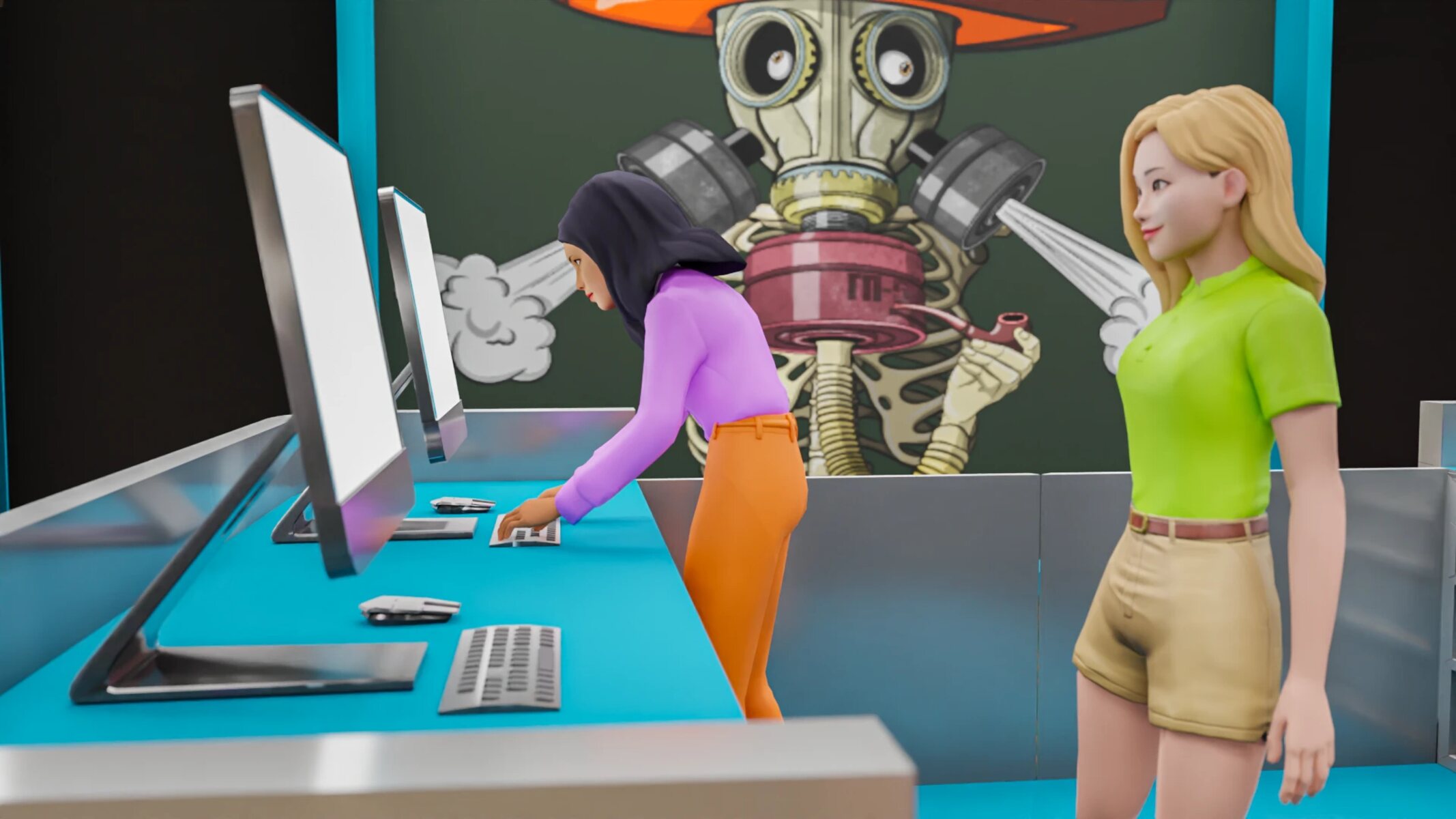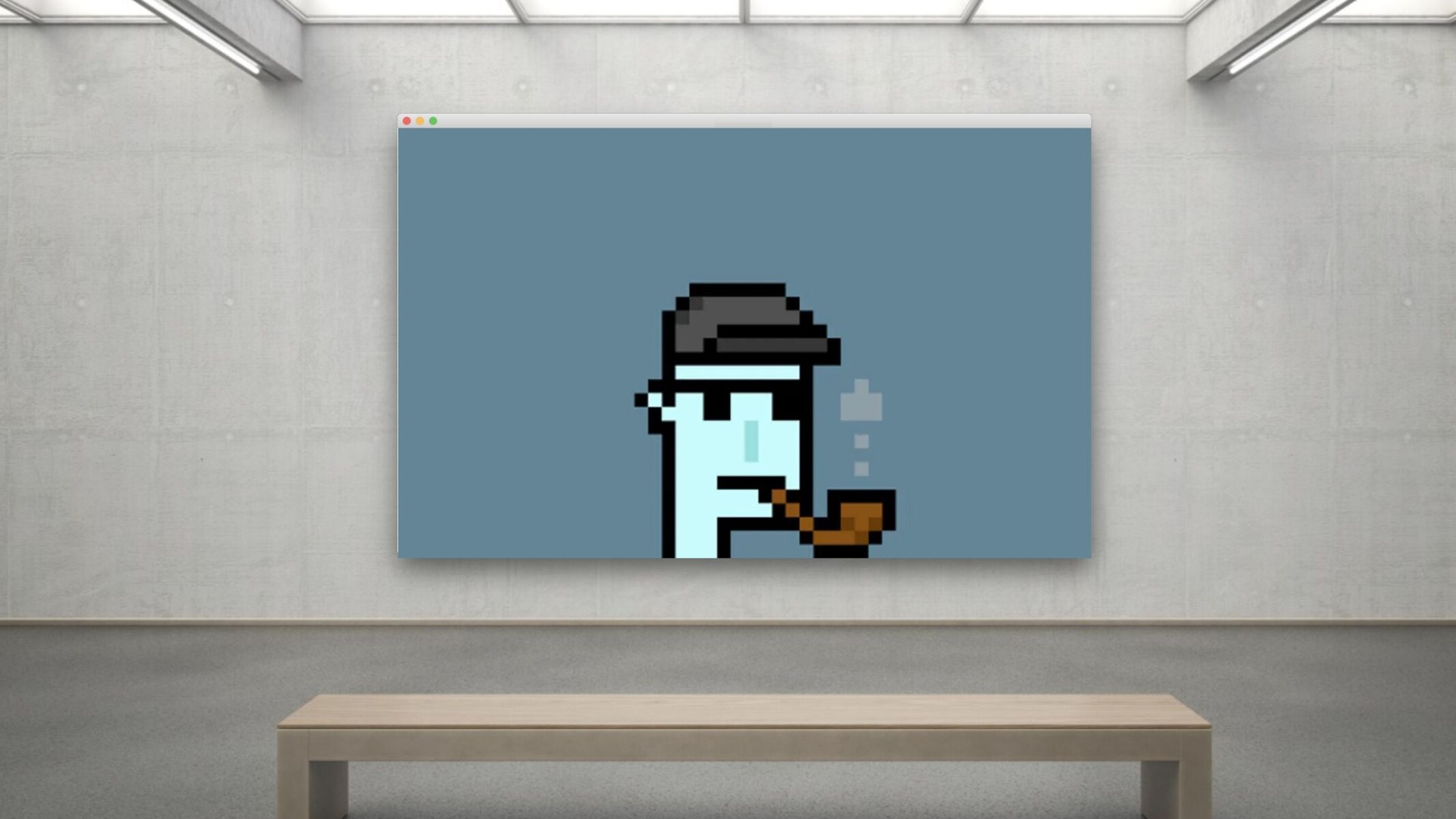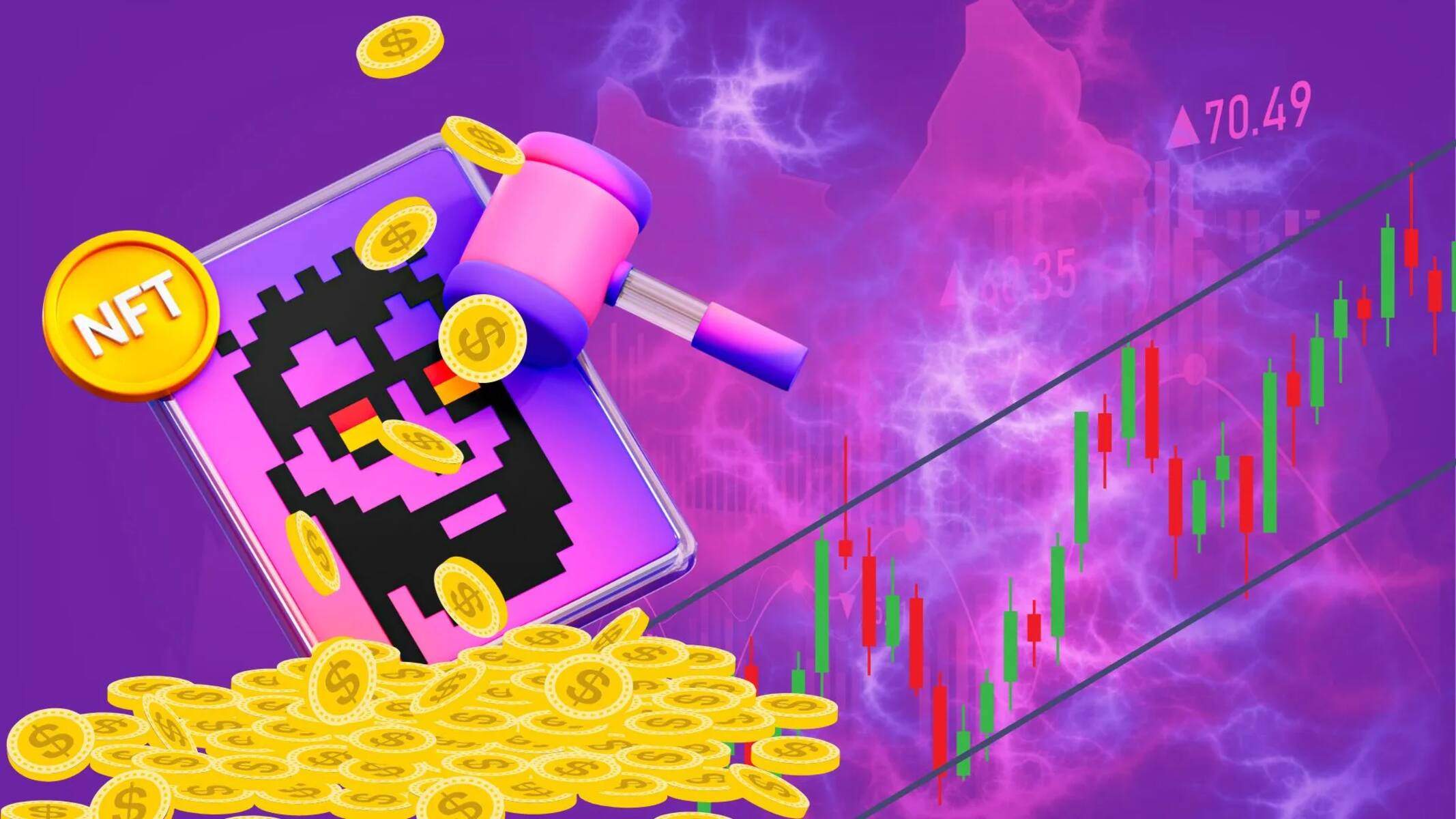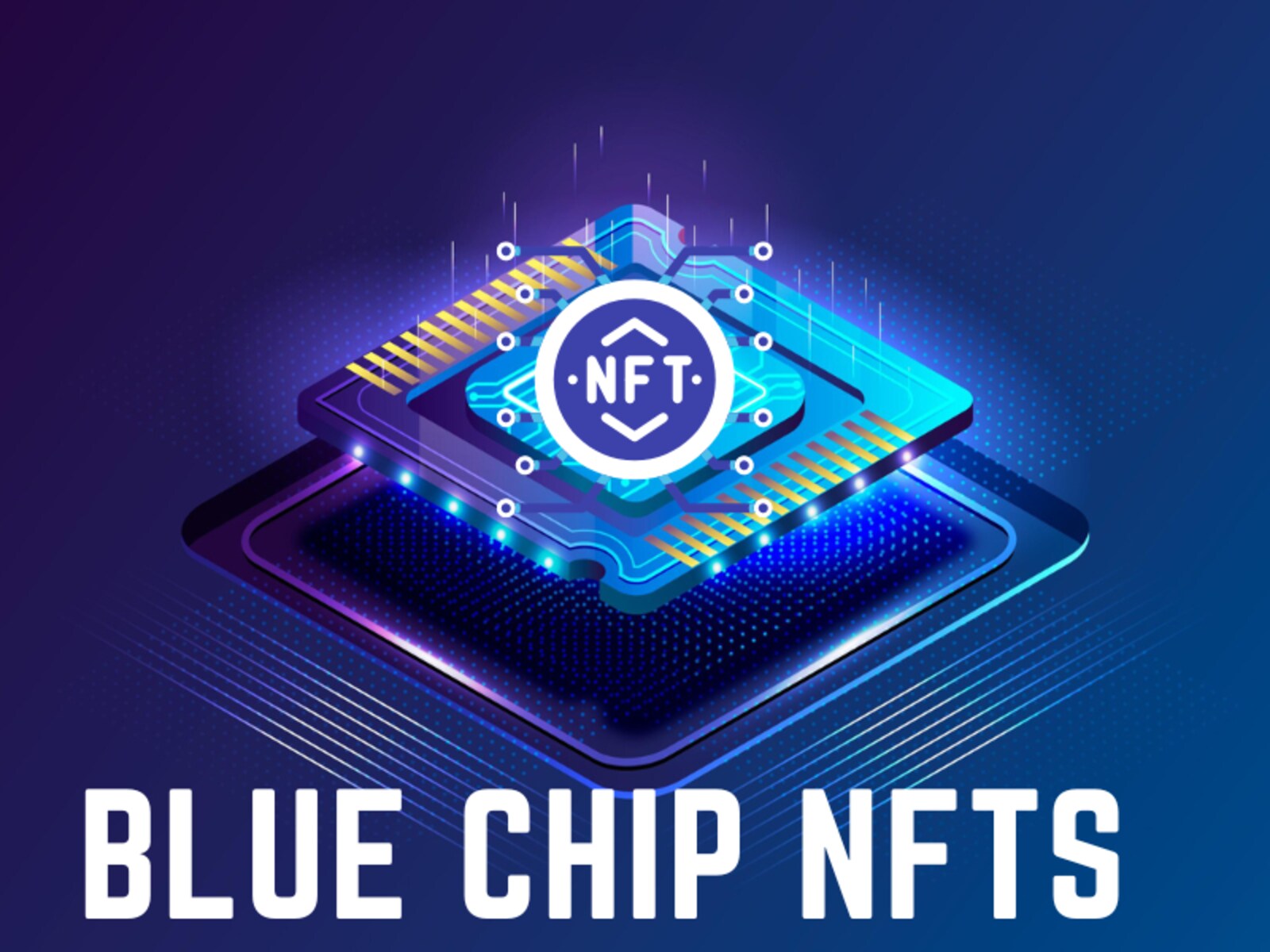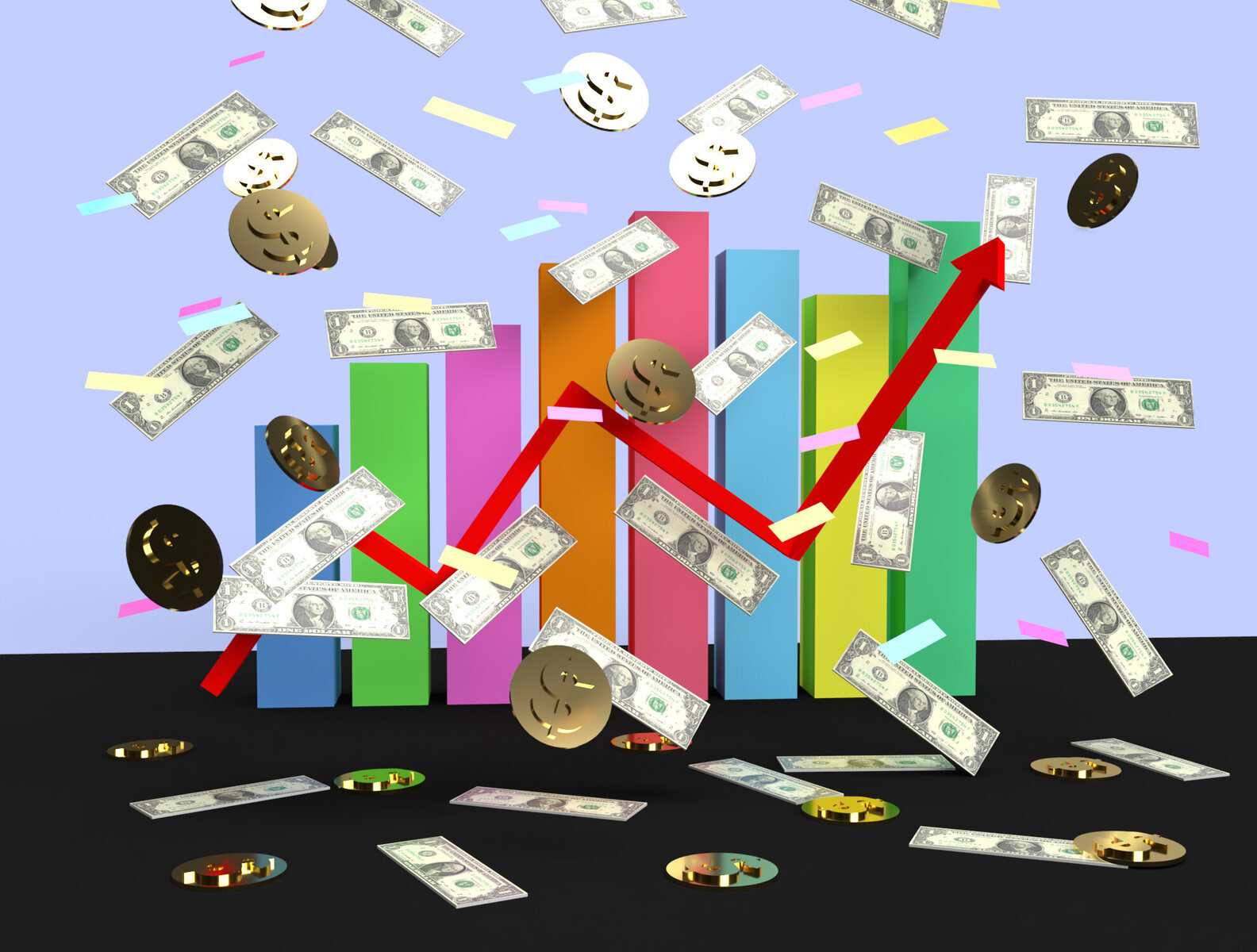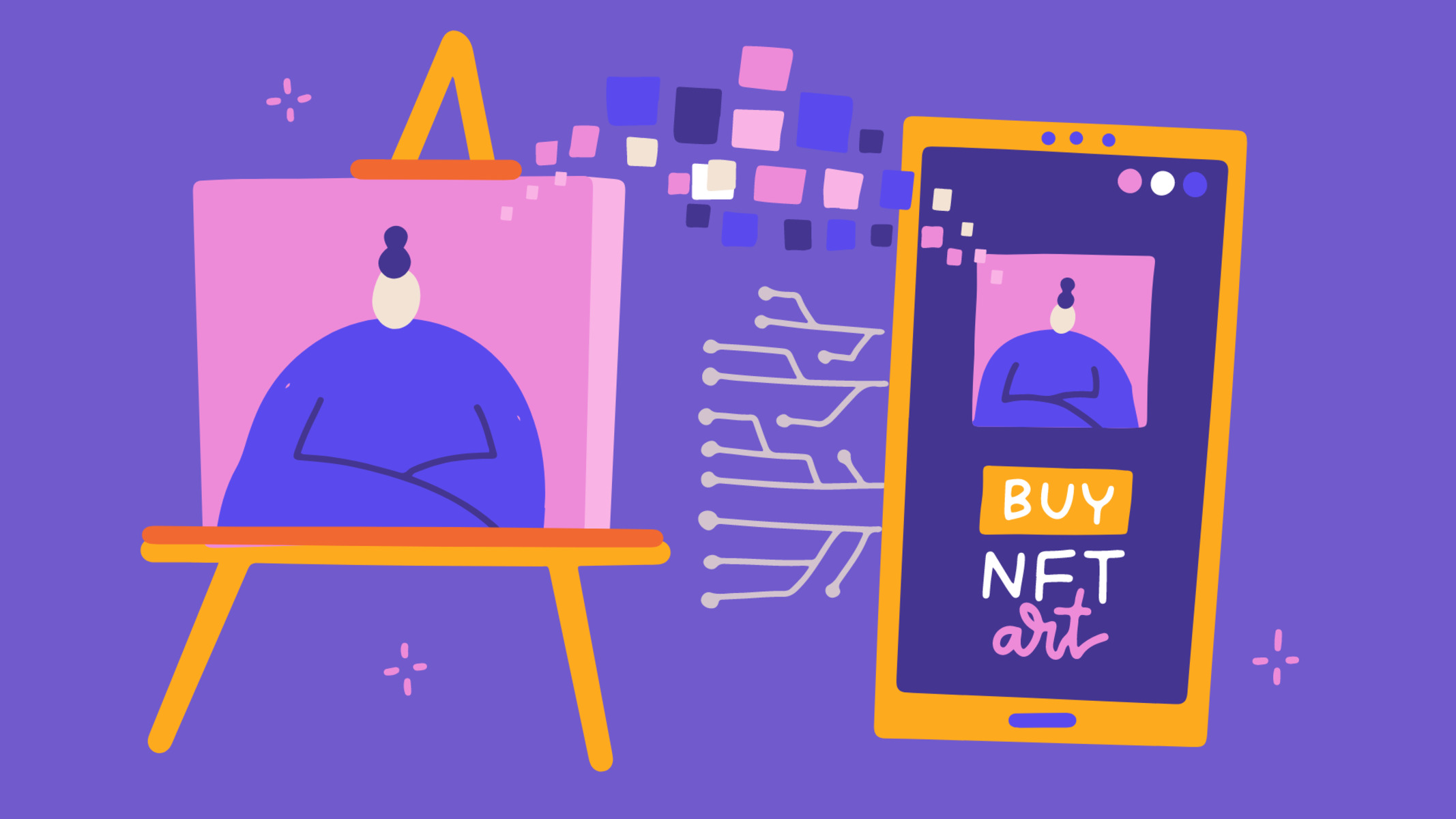Introduction
Welcome to the world of NFT art! In recent years, Non-Fungible Tokens (NFTs) have taken the art world by storm, revolutionizing the way artists create, own, and sell digital artwork. It’s an exciting time for creators and collectors alike, as NFTs provide a new level of uniqueness, authenticity, and value to digital art pieces.
But what exactly is an NFT art? NFTs are digital assets that use blockchain technology to certify their ownership and authenticity. Unlike cryptocurrencies such as Bitcoin or Ethereum, NFTs are one-of-a-kind and cannot be exchanged on a like-for-like basis. This uniqueness is what sets NFT art apart from traditional artwork and makes it an exciting and innovative medium for artists.
If you’re an artist looking to venture into the world of NFT art, this guide is for you. In this article, we’ll walk you through the step-by-step process of creating and selling your own NFT art. From choosing your artwork to minting NFTs and promoting your pieces, we’ll cover all the essential aspects of navigating the NFT art space.
It’s important to note that while NFTs have gained significant popularity and attention, they have also been subject to some controversy and scrutiny. As a writer and an artist, it’s crucial to be aware of the current discussions and debates surrounding NFTs, including environmental concerns and ownership rights. By staying informed and making thoughtful decisions, you can contribute to a more sustainable and ethical NFT ecosystem.
So, whether you’re a digital artist looking to embrace the world of NFTs or simply curious about the phenomenon, let’s dive into the exciting realm of NFT art and explore how you can create and sell your own unique digital masterpieces.
What is an NFT Art?
To understand NFT art, we need to delve into the concept of Non-Fungible Tokens (NFTs) first. NFTs are digital assets that utilize blockchain technology to establish ownership and authenticity. Unlike cryptocurrencies like Bitcoin or Ethereum, which are interchangeable and have equal value, NFTs are unique and cannot be exchanged on a like-for-like basis.
NFT art refers to digital artwork that is tokenized as an NFT. This means that an artist can create a digital piece, such as a painting, photograph, or illustration, and convert it into a digital asset using blockchain technology. The NFT acts as a digital certificate of ownership for that specific artwork.
When an artist mints their artwork as an NFT, they are essentially creating a digital original. This NFT can then be sold and transferred, with the ownership recorded on the blockchain. The blockchain provides a transparent and decentralized ledger, ensuring the authenticity and provenance of the artwork.
One of the key features of NFT art is its ability to incorporate smart contracts. These smart contracts enable artists to set royalty fees, so they can continue to receive a percentage of the sales whenever their artwork is sold or resold. This provides artists with an ongoing revenue stream and allows them to benefit from the increasing value of their work over time.
NFT art has opened up a world of possibilities for artists. It allows creators to explore new mediums, such as digital paintings, virtual reality experiences, and 3D sculptures. It also provides a platform for artists whose work may not be easily reproduced or sold in traditional art markets.
The appeal of NFT art extends beyond the traditional art world. Collectors and art enthusiasts are drawn to the uniqueness and scarcity of NFTs, along with the ability to easily buy, sell, and trade digital artworks on various NFT platforms. The digital nature of NFT art also brings opportunities for interaction and engagement, with artists creating immersive experiences and multimedia installations.
While NFT art has gained considerable attention and popularity, it has also faced criticism regarding its environmental impact and accessibility. The energy consumption of blockchain technology used in NFT transactions has raised concerns about carbon footprints. Additionally, the high transaction fees and exclusivity of some NFT platforms have limited accessibility for artists and collectors.
Overall, NFT art represents a new frontier in the art world, merging technology, creativity, and ownership. It offers artists innovative ways to create, monetize, and promote their work, while providing collectors with unique, digital assets to enjoy and trade. Through careful consideration and informed decision-making, artists can navigate the evolving landscape of NFT art and explore exciting opportunities in this digital realm.
Step 1: Choosing your artwork
The first step in creating your own NFT art is selecting the artwork you want to tokenize. This can be an existing piece of digital art or something new that you create specifically for the purpose of minting it as an NFT. Here are some considerations to keep in mind during the selection process:
- Choose standout artwork: Opt for artwork that showcases your unique style and artistic vision. Look for pieces that are visually striking, emotionally evocative, or conceptually intriguing. NFT collectors are attracted to artwork that stands out and has a strong personal touch.
- Consider the medium: NFT art can take various forms, such as digital paintings, illustrations, photographs, animations, or even 3D sculptures. Choose a medium that best suits your artistic expression and the concept you want to convey.
- Think about scarcity: NFTs thrive on the concept of scarcity, so consider creating limited edition series or one-of-a-kind pieces to increase the perceived value of your artwork. This can be achieved by creating variations of the artwork or by offering exclusive bonuses or extras with the NFT purchase.
- Ensure high-quality digital files: Before minting your artwork as an NFT, make sure you have high-resolution, digital files that accurately represent the details, colors, and textures of your artwork. This will ensure a seamless and satisfying viewing experience for collectors.
- Inject personal meaning: Infuse your artwork with personal stories, themes, or messages that resonate with you. NFT collectors are often drawn to art that has depth and meaning, so adding a personal touch can enhance the appeal and emotional connection of your artwork.
Once you have chosen the artwork you want to tokenize, it’s time to move on to the next step: creating a digital version of your artwork that will serve as the basis for your NFT. Whether you are starting from scratch or modifying an existing piece, make sure the digital version accurately represents the essence and quality of your artwork.
Remember, the artwork you choose to mint as an NFT represents your artistic vision and creativity. Take the time to carefully select a piece that best represents your style and resonates with both you and potential collectors. With a standout artwork in hand, you are ready to move forward on your NFT art journey.
Step 2: Creating a digital version
Once you have selected the artwork you want to tokenize, the next step is to create a high-quality digital version of your artwork that will serve as the basis for your NFT. Creating a digital version is essential for ensuring that your artwork can be properly displayed and appreciated in the digital realm. Here are some key steps to follow when creating a digital version of your artwork:
- Capture or scan your artwork: If you have created a physical artwork, such as a painting or a sculpture, you will need to digitally capture or scan it to create a digital file. Use a high-resolution camera or scanner to capture as much detail and accuracy as possible.
- Optimize the file: Once you have a digital file of your artwork, you may need to make adjustments or optimizations to ensure its visual quality. This can include adjusting the color balance, cleaning up any blemishes or imperfections, or enhancing the overall clarity of the image.
- Consider digital enhancements: Depending on the nature of your artwork, you may want to explore digital enhancements to further elevate its visual impact. This can involve adding special effects, animations, or interactive elements. However, be mindful of striking a balance between preserving the integrity of your original artwork and incorporating digital enhancements that enhance the overall experience.
- Choose an appropriate file format: The file format you choose for your digital artwork is crucial for compatibility and accessibility. Commonly used file formats for NFT art include JPEG, PNG, and GIF. Make sure to select a format that retains the quality of your artwork while also being widely supported by NFT platforms and viewers.
During the process of creating a digital version of your artwork, be sure to maintain the integrity and essence of the original piece. Pay attention to detail and ensure that the digital file accurately represents the colors, textures, and composition of your artwork. By creating a high-quality digital version, you will enhance the overall presentation and value of your NFT art.
Once you have successfully created a digital version of your artwork, you are ready to move on to the next step: choosing an NFT platform where you can mint your artwork and make it available for sale.
Step 3: Choosing an NFT platform
Choosing the right Non-Fungible Token (NFT) platform is a critical step in the process of selling your NFT art. The platform you choose will impact the visibility, reach, fees, and overall experience of selling your artwork as an NFT. Here are some factors to consider when selecting an NFT platform:
- Popularity and user base: Look for NFT platforms that have a large and active user base. A platform with a strong community of collectors and artists can increase the visibility and demand for your artwork.
- Fees and costs: Different platforms have varied fee structures for minting and selling NFTs. Consider the platform’s commission fees, gas fees (transaction fees on the blockchain), and any additional costs associated with listing and promoting your artwork. It’s essential to understand the costs involved and how they align with your expected earnings.
- Ease of use: Look for platforms that are user-friendly and easy to navigate. A platform with an intuitive interface and a streamlined process for minting and listing your NFTs will save you time and effort.
- Smart contract capabilities: Consider the smart contract capabilities offered by the platform. Smart contracts can provide you with ongoing royalties, allowing you to earn a percentage of each subsequent sale of your artwork. Check if the platform supports this feature and if it aligns with your revenue goals.
- Marketplace features: Evaluate the marketplace features offered by the platform. Look for features such as search filters, categorization, promotion opportunities, and social features that can help you connect with collectors and gain exposure for your NFT art.
- Recognition and reputation: Research the reputation of the platform within the NFT community. Look for platforms that have a track record of successfully selling high-quality artwork and are trusted by both artists and collectors.
Consider exploring multiple platforms to compare their features, fee structures, and overall suitability for your NFT art. Remember that different platforms may cater to different art styles, genres, or target audiences, so choose the platform that aligns best with your artistic vision and goals.
Some popular NFT platforms include Mintable, OpenSea, Rarible, SuperRare, and Foundation. Each platform has its own unique offerings and user base, so take the time to research and understand their strengths and weaknesses before making a decision.
Once you have chosen the NFT platform that best fits your needs, you will be ready to mint your artwork, transforming it into a one-of-a-kind digital asset. In the next step, we will explore the process of minting your NFT and preparing it for sale.
Step 4: Minting your NFT
Minting your Non-Fungible Token (NFT) is the process of transforming your digital artwork into a unique and verifiable digital asset. Minting assigns a specific digital signature to your artwork, certifying its authenticity, ownership, and scarcity. Here is a step-by-step guide on how to mint your NFT:
- Select the NFT platform: Choose the NFT platform where you want to mint your artwork. Ensure it supports the file type and features you need, such as displaying metadata or setting royalty fees.
- Create an account: Register an account on the chosen NFT platform following their registration process. Provide the necessary information and complete any required verification steps.
- Prepare your digital artwork: Prepare your digital artwork file in the proper file format, ensuring it meets the platform’s specifications. Consider adding metadata to provide additional details about your artwork, such as title, description, and edition number, if applicable.
- Upload your artwork: Upload the digital file of your artwork to the platform. Follow the instructions provided by the platform to ensure a successful upload. Some platforms may require the use of a digital wallet to facilitate the minting process.
- Set minting details: Once your artwork is uploaded, you will be prompted to enter minting details. This includes setting a price for your NFT and potentially setting royalty fees for future sales of your artwork. Take the time to carefully consider these details, as they will impact the potential earnings and rights associated with your NFT.
- Review and confirm: Review the details of your NFT, including the artwork, metadata, and minting settings. Ensure that everything is accurate and to your satisfaction. Once you are ready, confirm the minting process and wait for the blockchain to process your transaction.
- Transaction confirmation: Depending on the blockchain being used and the platform’s process, it may take some time for your NFT to be minted and confirmed on the blockchain. Be patient and allow the necessary time for the transaction to complete.
Once the transaction is confirmed, your artwork will be transformed into an NFT, complete with a unique token ID and verifiable ownership on the blockchain. It will be publicly displayed on the NFT platform’s marketplace, where collectors can discover and purchase your artwork.
Remember to promote your newly minted NFT on social media, art communities, and your personal network to increase its visibility and attract potential buyers. Engage with the community, share the story behind your artwork, and actively participate in discussions to deepen connections with collectors and fellow artists.
Now that your artwork is minted as an NFT, it’s time to move on to the next step: setting a price and royalty fees for your NFT, ensuring you are fairly compensated for your work.
Step 5: Setting a price and royalties
Setting a price and royalties for your Non-Fungible Token (NFT) is an important step in determining the value of your artwork and ensuring fair compensation for your creative efforts. Here are some considerations when setting the price and royalties for your NFT:
- Market research: Research the market to gain insights into the pricing trends for similar artworks. Explore the prices of comparable NFTs in terms of style, medium, and popularity. This will help you gauge the potential value of your artwork and make an informed pricing decision.
- Artistic value: Consider the artistic value and uniqueness of your artwork. Factors such as your artistic reputation, previous sales records, and the demand for your work can influence the pricing. You may also take into account the effort, time, and skill that went into creating the artwork.
- Scarcity and exclusivity: If your artwork is part of a limited edition or has unique features, such as being the only one of its kind, you can price it accordingly. The scarcity of your NFT can enhance its perceived value and justify a higher price point.
- Royalties: Determine whether to set up royalty fees for your artwork. Royalties allow you to earn a percentage of future resales. Consider the percentage that feels fair to you and can provide an ongoing revenue stream as your NFT gains value and potential resale activity increases.
- Community engagement: Engage with your audience and potential buyers to understand their preferences and expectations. Seek feedback and adjust your pricing strategy accordingly. Building a community around your artwork can contribute to its value and generate interest.
When setting a price and royalties, it’s important to find the right balance between maximizing the value of your artwork and attracting potential buyers. Avoid overpricing your NFT, as this may deter collectors and limit the potential for sales. On the other hand, undervaluing your artwork may undermine its perceived worth and impact the long-term sustainability of your artistic practice.
It’s worth noting that the NFT market is dynamic and can fluctuate. Stay informed about current trends and adapt your pricing strategy accordingly. Be open to adjusting the price and royalties over time based on market demand, sales performance, and the overall growth of the NFT ecosystem.
Once you have set the price and royalties for your NFT, it’s time to list and promote your artwork to reach a wider audience. In the next step, we will explore the process of listing your NFT artwork on the chosen platform and strategies for effective promotion.
Step 6: Listing and promoting your NFT art
Congratulations on reaching the final step of the process – listing and promoting your Non-Fungible Token (NFT) art. This step is crucial for gaining visibility, attracting potential buyers, and maximizing the chances of a successful sale. Here are some strategies to consider when listing and promoting your NFT art:
- Optimize your listing: When listing your NFT, pay attention to the title, description, and tags. Use keywords that accurately represent your artwork and reflect its unique features. Craft a compelling description that engages potential buyers and highlights the story or inspiration behind your artwork.
- Engage with the community: Building connections within the NFT community is key to promoting your artwork. Participate actively in forums, social media groups, and art communities related to NFTs. Share your journey, insights, and updates about your artwork. Engage in discussions, provide valuable feedback to fellow artists, and establish yourself as an active member of the community.
- Leverage social media: Utilize popular social media platforms, such as Twitter, Instagram, and TikTok, to promote your NFT art. Share high-quality images or videos of your artwork, along with captivating captions that provide context or tell a story. Collaborate with other artists or influencers to reach new audiences and gain exposure.
- Create a portfolio or website: Consider creating a dedicated portfolio or website showcasing your NFT art. This allows potential buyers to explore your collection and learn more about your artistic journey. Include detailed information about each artwork, including its inspiration, process, and any notable achievements or awards.
- Collaborate or participate in events: Collaborating with other artists or participating in NFT-focused events can expand your reach and attract new buyers. Explore opportunities to showcase your artwork in virtual galleries, art festivals, or curated collections. Engage in cross-promotion with other artists, where you promote each other’s work to your respective audiences.
- Tap into existing NFT marketplaces: Besides your own promotional efforts, leverage the exposure provided by established NFT marketplaces. Platforms like OpenSea, Rarible, or SuperRare have built-in audiences of collectors actively searching for NFT art. List your artwork on these platforms, use relevant tags, and regularly engage with comments and inquiries from potential buyers.
Remember, promoting your NFT art is an ongoing process that requires consistent effort and engagement. Keep refining your promotional strategies, adapting to changing market trends, and refining your artistic practice. Engage with your collectors, appreciate their support, and continue to offer valuable and unique artworks to cultivate a loyal following.
By effectively listing and promoting your NFT art, you increase its visibility and the potential for sales. Take an active role in marketing your artwork to maximize its exposure and connect with art enthusiasts who appreciate your unique creative expression.
With your NFT art fully listed and promoted, you have completed the step-by-step journey of creating and selling your own NFT art. Embrace the opportunities and challenges that come with the NFT ecosystem, and continue to innovate and contribute to this evolving space of digital art.
Conclusion
Congratulations on completing the journey of creating and selling your own Non-Fungible Token (NFT) art! You have discovered the exciting world of digital creativity, harnessed blockchain technology to tokenize your artwork, and navigated the intricacies of the NFT ecosystem. As you continue your artistic journey, here are a few key takeaways to keep in mind:
1. Embrace the uniqueness: NFT art offers a new realm of artistic expression and ownership. Embrace the uniqueness of this medium and leverage its potential to create groundbreaking, immersive, and interactive artwork that captivates the audience.
2. Stay informed: The NFT market is constantly evolving, and it’s essential to stay informed about the latest trends, debates, and discussions surrounding NFTs. Educate yourself about the environmental impact, ownership rights, and ethical considerations of participating in the NFT ecosystem.
3. Connect with the community: Engage with fellow artists, collectors, and enthusiasts in the NFT community. Building connections, collaborating, and supporting one another will not only expand your network but also open up opportunities for growth and exposure.
4. Continuously refine your craft: Keep refining your artistic skills, exploring new techniques, and experimenting with different mediums. Embrace feedback and learn from both successes and failures. Embracing lifelong learning and growth will help you evolve as an artist and stand out in the competitive NFT art market.
5. Stay adaptable: The NFT landscape is dynamic and ever-changing. Be adaptable to the evolving trends and technologies, and be open to experimenting with new platforms, features, and promotional strategies. Flexibility and adaptability will position you to take advantage of emerging opportunities in the NFT space.
Creating and selling NFT art is a fulfilling and innovative journey, allowing artists to redefine the boundaries of traditional art markets and explore new frontiers of digital creativity. Remember to stay true to your artistic vision, embrace the power of technology, and actively engage with the thriving NFT community. With passion, perseverance, and a commitment to excellence, your NFT art can reach new heights and leave a lasting impact on the digital art world.







